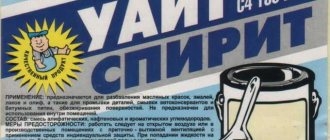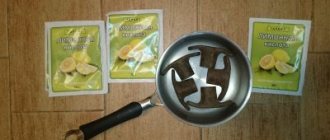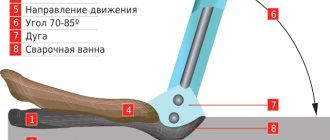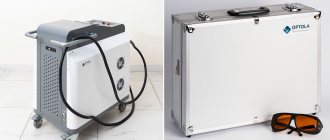When corrosion occurs on metal, the solution to the problem is to use a rust converter.
As a result of a chemical reaction with corrosion products, it is eliminated, and a protective layer is formed on the surface, preventing further damage to the metal.
Do I need to wash off the rust converter from the metal before painting, what is the best way to wash it off? You will find answers to questions in the article.
What does phosphoric acid do?
Phosphoric acid and its salts (dihydrogen phosphates, hydrogen phosphates and phosphates) are widely used in the production of mineral fertilizers. The most common phosphate fertilizers are simple superphosphate, precipitate and rock phosphate.
Interesting materials:
How to start Windows 10 safe mode when starting Acer? How to start Windows 10 safe mode when Lenovo starts? How to start Windows 7 Asus safe mode? How to start Windows 8 safe mode on an hp laptop? How to start Windows 8 safe mode on Lenovo laptop? How to start Windows 8 safe mode on boot? How to start BIOS Windows XP? How to launch Boot Menu on Windows 10? How to launch the browser on Windows 10? How to run Chkdsk on Windows 10?
About caustic and not so caustic
– These idiots placed a porcelain container with “jelly” in a special chamber, extremely isolated... That is, they thought that the chamber was extremely isolated, but when they opened the container with manipulators, the “jelly” went through the metal and plastic, like water through a blotter, and escaped outward, and everything he came into contact with again turned into “jelly.” Thirty-five people were killed, more than a hundred were maimed, and the entire laboratory building was completely unusable. Have you ever been there? Magnificent building! And now the “jelly” has flowed into the basements and lower floors... Here is the prelude to contact.
— A. Strugatsky, B. Strugatsky “Roadside Picnic”
Hello, %username%!
Blame this person for the fact that I’m still writing something. He gave me the idea.
Just after some thought, I decided that a short excursion into caustic substances would be relatively quick. Maybe someone will be interested. And for some it’s useful.
Go. Let’s immediately define the concepts.
Corrosive - 1. Chemically corrosive. 2. Sharp, causing irritation, pain. 3. Sargent, caustic.
Ozhegov S.I.
Dictionary of the Russian language. - M.: Rus.yaz., 1990. - 921 p. So, we immediately discard the last two meanings of the word. We also discard “caustic” lachrymators - which are not so much caustic as they cause lacrimation, and sternites - which cause coughing. Yes, below there will be substances that have these properties, but they are what is important! - really corrode materials, and sometimes flesh.
We will not consider substances that are caustic only for humans and the like - due to the specific destruction of cell membranes. Therefore, mustard gases will remain out of use.
We will consider compounds that are liquids at room conditions. Therefore, we will not consider liquid oxygen and nitrogen, as well as gases such as fluorine, although they can be considered caustic, yes.
As always, the view will be purely subjective, based on personal experience. And yes - it’s quite possible that I won’t remember someone - write comments, %username%, within three days from the date of publication I will supplement the article with what was forgotten from the very beginning!
And yes - I don’t have the time and energy to build a “hit parade”, so it will be a hodgepodge. And with all the exceptions, it turned out to be quite short.
Caustic alkalis
Specifically, alkali metal hydroxides: lithium, sodium, potassium, rubidium, cesium, francium, thallium (I) hydroxide and barium hydroxide. But:
- Lithium, cesium, rubidium and barium are discarded - expensive and rare
- If you, %username%, come across francium hydroxide, then the last thing you will worry about is causticity - it is terribly radioactive
- It’s the same with thallium - it’s terribly poisonous.
Therefore, sodium and potassium remain.
But let's be honest - the properties of all caustic alkalis are very similar. Sodium hydroxide is known to everyone as “caustic soda” (not to be confused with baking soda, soda ash and other soda, as well as potash). Potassium hydroxide as a food additive E525 too. Both are similar in properties: they are highly hygroscopic, that is, they attract water and “dissolve” in air. They dissolve well in water and release a large amount of heat.
“Spreading” in air is essentially the formation of very concentrated solutions of alkalis. Therefore, if you put a piece of caustic alkali on paper, leather, some metals (the same aluminum) - then after a while you will find that the material has eaten well! What was shown in “Fight Club” is very similar to the truth: indeed, sweaty hands - and the alkali - will hurt! Personally, I found it more painful than hydrochloric acid (more on that below).
However, if your hands are very dry, most likely you won’t feel anything in the dry alkali.
Caustic alkalis are excellent at breaking down fats into glycerin and salts of fatty acids - this is how soap is made (hello, “Fight Club!”) A little longer, but just as effectively, proteins are broken down - that is, in principle, alkalis dissolve flesh, especially strong solutions - and when heated . The disadvantage in comparison with the same perchloric acid (more on that below) is that all alkalis draw carbon dioxide from the atmosphere, and therefore the strength will gradually decrease. In addition, alkalis also react with the components of glass - the glass becomes cloudy, although in order to dissolve it completely, here, of course, you have to try.
Tetraalkylammonium hydroxides are sometimes classified as caustic alkalis, for example
tetramethylammonium hydroxide
In fact, these substances combine the properties of cationic surfactants (well, it’s like ordinary soap - only cationic: here the active diphilic particle is with a “+” charge, and in soap - with a “-” charge) and relatively high basicity. If it gets on your hands, you can lather it in water and wash it like soap; if you warm your hair, skin or nails in an aqueous solution, they will dissolve. The “causticity” against the background of sodium and potassium hydroxides is so-so.
Sulfuric acid
H2SO4
The most popular, probably, in all stories. Not the most caustic, but quite unpleasant: concentrated sulfuric acid (which is 98%) is an oily liquid that loves water very much, and therefore takes it away from everyone. By taking water away from cellulose and sugar, it chars them. In the same way, she will happily take the water away from you, %username%, especially if you pour it on the delicate skin of your face or into your eyes (well, in fact, everything will get into your eyes with adventure). Particularly kind people mix sulfuric acid with oil to make it harder to wash off and better absorbed into the skin.
By the way, when taking in water, sulfuric acid heats up greatly, which makes the picture even more juicy. Therefore, washing it off with water is a very bad idea. It’s better to use oil (rinse off, not rub in, and then rinse with water). Well, or a large flow of water to immediately cool it.
“First water, and then acid - otherwise big trouble will happen!” — this is specifically about sulfuric acid, although for some reason everyone thinks that it’s about any acid.
Being an oxidizing agent, sulfuric acid oxidizes the surface of metals to oxides. And since the interaction of oxides with acids takes place with the participation of water as a catalyst - and sulfuric acid does not release water - an effect called passivation occurs: a dense, insoluble and impenetrable film of metal oxide protects it from further dissolution.
According to this mechanism, concentrated sulfuric acid is sent to distant distances by iron and aluminum. It is noteworthy that if the acid is diluted, water appears, and it is impossible to send - the metals dissolve.
By the way, sulfur oxide SO3 dissolves in sulfuric acid and produces oleum - which is sometimes mistakenly written as H2S2O7, but this is not entirely correct. Oleum has an even greater attraction to water.
My own feelings when sulfuric acid gets on my hand: it’s a little warm, then it burns a little - I washed it off under the tap, no big deal. Don't believe the movies, but I don't recommend putting it on your face.
Organics often use chromium or “chromic mixture” - this is potassium dichromate dissolved in sulfuric acid. Essentially this is a solution of chromic acid, it is good for washing dishes from organic residues. If it gets on your hand, it also burns, but essentially it’s sulfuric acid plus toxic hexavalent chromium. You won't find holes in your hand, except maybe on your clothes.
The author of these lines knows an idiot who used potassium permanganate instead of potassium dichromate. Upon contact with organic matter, it stung a little. Those present shit themselves and escaped with a slight fright.
By the way, since we remembered chromium, let’s digress a little from the topic of acids and
Chromyl chloride
CrO2Cl2
Essentially, it is a violent compound of hexavalent chromium and hydrochloric acid. The dark red liquid, which draws water, hydrolyzes - and eventually smokes this very hydrochloric acid. Causticity is the result of this fraternal unity: chromium oxidizes, hydrochloric acid dissolves: it ignites some organic solvents (alcohol, turpentine), but dissolves in some (carbon tetrachloride, dichloromethane, carbon disulfide). It eats up metals, but not as well as acids - again it’s a matter of passivation. for example, steel, when exposed, acquires a beautiful dark blue surface.
The skin - understandably - ulcerates, and chrompica is stronger in this, since it penetrates better into the skin as into non-polar organic tissue. But it’s not even that, it’s about hexavalent chromium, which is actually a carcinogen, and therefore if it penetrates deeper, there are more problems. And of course, inhaling is much more dangerous.
Hydrochloric acid
HCl
does not exceed 38% in water. One of the most popular acids for dissolution - in this it is cooler than others, because technologically it can be very pure, and in addition to acting as an acid, it also forms complex chlorides that increase solubility. By the way, it is for this reason that insoluble silver chloride is very soluble in concentrated hydrochloric acid.
This one, when it comes into contact with the skin, burns a little more, subjectively, it also itches, and also stinks: if you work a lot with concentrated hydrochloric acid in a laboratory with a poor hood, your dentist will thank you: you’ll make it rich on fillings. By the way, chewing gum helps. But not much. Better - a hood.
Since it is not oily and does not heat up much with water, it is caustic only to metals, and not to all. By the way, steel in concentrated hydrochloric acid is passivated and says “nope!” This is what they use during transportation.
Nitric acid
HNO3
Also very popular, for some reason they are also afraid of it - but in vain. Concentrated - this is the one up to 70% - it is the most popular, higher - it is “smoking”, most often no one needs it. There is also anhydrous one - and it also explodes.
Being an oxidizing agent, it passivates many metals that become covered with an insoluble film and say “goodbye” - these are chromium, iron, aluminum, cobalt, nickel and others.
It instantly reacts with the skin according to the principle of the xanthoprotein reaction - there will be a yellow spot, which means that you, %username%, are still made of protein! After some time, the yellow skin will peel off, as if burned. At the same time, it stings less than salt, although it stinks no worse - and this time it is more toxic: flying nitrogen oxides are not very good for the body.
In chemistry, they use the so-called “nitrating mixture” - the most popular one consists of sulfuric and nitric acids. It is used in syntheses, in particular in the production of a cheerful substance - pyroxylin. In terms of causticity - the same chromium plus beautiful yellow skin.
There is also “regia vodka” - this is part nitric acid to three parts hydrochloric acid. Used to dissolve certain metals, mainly precious ones. The drip method of checking the sample of gold products is based on different ratios and the addition of water - by the way, it is very difficult for specialists using this method to fool with a fake. In terms of causticity for the skin - the same “nitrating mixture” plus it smells great, the smell cannot be confused with anything else, it is also quite toxic.
There is also “reverse aqua regia” - when the ratio is reversed, but this is a rare specificity.
By the way, about that very “smoking” one, which is red, angry and an oxidizing agent - I quote the story of a good friend who sent me just now.
I drove this very 98% nitrogen. Whether it was simply distilled for purification, or from melange, I don’t remember. I caught up with about two liters and removed the receiver. I ask the laboratory assistant to give me a clean 2-liter flask and pour it into it. She gave it to me, dry, clean, but with alcohol - and with the cap closed. That is, the pairs were and accumulated. I pour it into the funnel and pour it. I take her there and she comes back. I sprayed it well on my hands, on my face and below my neck. It felt like an eagle grabbed your face. Plus the arms, neck, under the nose, etc. little things. In my hands, I remind you, are two liters of the same goodness. Eyes closed, naturally. I understand that you can’t throw the flask, it will immediately become much worse. I carefully place the flask on the rubber stand, move to the sink, turn the gander into my face and turn on full pressure. I managed it in about five seconds. I didn’t reach the subcutaneous tissue. Otherwise everything would have been much worse. I saw with another guy that it happens after 10-15 seconds. Difficult-to-heal purple scars on half of the arm. Then I realized why she was so angry. Not only is it a fairly strong acid and oxidizing agent, it is also a wonderful solvent. It is indefinitely miscible with water, but also indefinitely miscible with, for example, dichloroethane. This is some kind of biphilic rubbish.
Phosphoric acid
H3PO4
In fact, I gave the formula for orthophosphoric acid, the most common one. And there is also metaphosphoric, polyphosphoric, ultraphosphoric - in short, that’s enough, but it doesn’t matter.
Concentrated orthophosphoric acid (85%) is such a syrup. The acid itself is average, it is often used in the food industry, by the way - when you get fillings, the surface of the tooth is first etched with phosphoric acid.
Its corrosion properties are so-so, but there is an unpleasant nuance: this syrup is well absorbed. Therefore, if it drips on things, it will be absorbed, and then it will slowly corrode. And if there is a stain or a hole from nitric and hydrochloric acid, then from phosphorus the thing will fall apart, this is especially colorful on shoes, when the hole seems to crumble until it turns out right through.
Well, in general it’s difficult to call it caustic.
Hydrofluoric acid
HF
Concentrated hydrofluoric acid is about 38%, although there are the odd exception.
A weak acid that takes the fierce love of fluoride ions to form persistent complexes with everyone with whom it can. Therefore, it surprisingly dissolves what other, stronger friends cannot, and therefore is very often used in various mixtures for dissolution. When you get it on your hand, the sensations will be greater from other components of such mixtures, but there is a nuance.
Hydrofluoric acid dissolves SiO2. That is sand. That is glass. That is, quartz. And so on. No, if you splash this acid on a window, it won’t dissolve, but a cloudy stain will remain. To dissolve, you need to hold it for a long time, or even better, heat it. When dissolved, SiF4 is released, which is so beneficial for health that it is better to do it under a hood.
A small but pleasant nuance: you, %username%, contain silicon in your nails. So, if hydrofluoric acid gets under your nails, you won’t notice anything. But you won’t be able to sleep at night - it will hurt SO much that sometimes you want to tear your finger off. Believe me, friend, I know.
And in general, hydrofluoric acid is toxic, carcinogenic, absorbed through the skin and a lot of other things - but today we’re talking about causticity, right?
Do you remember how we agreed at the very beginning that there would be no fluoride? He won't be. But they will...
Fluorides of inert gases
In fact, fluorine is a tough guy, you can’t really show off with it, and therefore some inert gases form fluorides with it. The following stable fluorides are known: KrF2, XeF2, XeF4, XeF6. All these are crystals, which in air at different speeds and readily decompose with moisture to hydrofluoric acid. The causticity is appropriate.
Hydroiodic acid
HI
The strongest (by degree of dissociation in water) binary acid. A strong reducing agent, which is used by organic chemists. In air it oxidizes and turns brown, which causes stains upon contact. The sensation upon contact is like salt water. All.
Perchloric acid
HClO4
One of the strongest (in terms of the degree of dissociation in water) acids in general (super acids compete with it - more about them below) - the Hammett acidity function (a numerical expression of the ability of a medium to be a proton donor in relation to an arbitrary base, the lower the number, the stronger the acid) is -13. Anhydrous is a strong oxidizing agent, likes to explode, and is generally unstable. Concentrated (70%-72%) is an oxidizing agent no worse, often used in the decomposition of biological objects. Decomposition is interesting and exciting because it can explode in the process: you need to make sure that there are no coal particles, that it does not boil too violently, etc. Perchloric acid is also quite dirty - it cannot be purified by subdistillation, the infection explodes! Therefore, it is not used often.
When it comes into contact with the skin, it burns and feels like salt. It stinks. When you see in films that someone threw a corpse into a container with perchloric acid and it dissolved, then yes, this is possible - but it will take a long time or warm it up. If you heat it up, it may explode (see above). So be critical of cinema (I think I saw this in 10 Cloverfield Lane).
By the way, the causticity of chlorine oxide (VII) Cl2O7 and chlorine oxide (VI) Cl2O6 is the result of the fact that these oxides form perchloric acid with water.
Now let’s imagine that we decided to combine strong acidity and the causticity of fluorine in one compound: let’s take a molecule of perchloric or sulfuric acid and replace all the hydroxyl groups on it with fluorine! The rubbish will turn out to be rare: it will interact with water and similar compounds - and at the site of the reaction a strong acid and hydrofluoric acid will immediately be obtained. A?
Fluorides of sulfur, bromine and iodine
Remember we agreed to consider only liquids? For this reason, our article did not include chlorine trifluoride ClF3
, which boils at +12 °C, although all the horror stories are that it is terribly toxic, ignites glass, a gas mask and, when spilled 900 kilograms, eats 30 cm of concrete and a meter of gravel - everything This is true. But we agreed - liquids.
However, there is a yellow liquid - iodine pentafluoride IF5
, colorless liquid -
bromine trifluoride BrF3
, light yellow -
bromine pentafluoride BrF5
, which are no worse. BrF5, for example, also dissolves glass, metals and concrete.
Similarly, among all sulfur fluorides, only disulfur decafluoride (sometimes called sulfur pentafluoride) is liquid - a colorless liquid with the formula S2F10
. But this compound is quite stable at ordinary temperatures, does not decompose with water - and therefore is not particularly caustic. True, it is 4 times more toxic than phosgene with a similar mechanism of action.
By the way, iodine pentafluoride is said to have been the “special gas” used to fill the atmosphere in the escape shuttle in the final scenes of the 1979 film Alien. Well, I don’t remember, honestly. Reminds me! Damn, it’s so cool there that I couldn’t resist and dedicated a separate article to it.
I even found it, took a closer look and realized that Ripley lived there in such harsh conditions that the alien beast was just cute
Super acids
The term "super acid" was coined by James Conant in 1927 to classify acids that are stronger than ordinary mineral acids.
In some sources, perchloric acid is classified as a super acid, although this is not so - it is an ordinary mineral one. A number of superacids are mineral acids to which a halogen has been attached: the halogen pulls electrons onto itself, all the atoms get very angry, and everything goes to hydrogen as usual: it falls off in the form of H+ - boom: so the acid has become stronger.
Examples - fluorosulfuric and chlorosulfuric acids
Fluorosulfuric acid has a Hammett function of -15.1; by the way, thanks to fluorine, this acid gradually dissolves the test tube in which it is stored.
Then someone smart thought: let's take a Lewis acid (a substance that can accept a pair of electrons from another substance) and mix it with a Brønsted acid (a substance that can donate a proton)! Antimony pentafluoride was mixed with hydrofluoric acid to obtain hexafluorantimony acid HSbF6
. In this system, hydrofluoric acid releases a proton (H+), and the conjugate base (F−) is isolated by a coordination bond with antimony pentafluoride. This produces a large octahedral anion (SbF6−), which is a very weak nucleophile and a very weak base. Having become “free”, the proton determines the hyperacidity of the system - Hammett function -28!
And then others came and said why they took Bernstead’s weak acid and came up with this.
Trifluoromethanesulfonic acid
- in itself is already a super acid (Hammett function -14.1).
So, they added antimony pentafluoride to it again - they got a decrease to -16.8! The same trick with fluorosulfuric acid gave a reduction to -23. And then a group of scientists from the chemistry department of the American University of California, led by Professor Christopher Reed, hung out with colleagues from the Institute of Catalysis of the Siberian Branch of the Russian Academy of Sciences (Novosibirsk) and came up with carborane acid H(CHB11Cl11). Well, they called it “carborane” for ordinary people, but if you want to feel like a scientist, say “2,3,4,5,6,7,8,9,10,11,12-undecachlor-1-carba-closo-dodecaborane (12)” three times and quickly.
This is what this beauty looks like
This is a dry powder that is soluble in water.
This is the Strongest Acid at the moment. Carborane acid is approximately a million times stronger than concentrated sulfuric acid. It is not possible to measure the strength of an acid on a conventional scale, since the acid protonates all known weak bases and all solvents in which it dissolves, including water, benzene, fullerene-60, and sulfur dioxide. Subsequently, Christopher Reed told Nature news service: “The idea for the synthesis of carborane acid was born out of fantasies about “molecules that had never been created before.” Together with his colleagues, he wants to use carborane acid to oxidize atoms of the noble gas xenon - simply because no one has done it before. Original, what can I say.
Well, since super acids are ordinary acids, they act normally, only a little stronger. It is clear that the skin will burn, but this does not mean that it will dissolve. Fluorosulfonic acid is a separate case, but it’s all thanks to fluorine, just like in fluoride.
Trihaloacetic acids
Specifically, trifluoroacetic and trichloroacetic acid
Cute and pleasant due to the combination of the properties of an organic polar solvent and a fairly strong acid.
They stink—like vinegar. The cutest thing is trifluoroacetic acid: a 20% solution destroys metals, cork, rubber, bakelite, polyethylene. The skin burns and forms dry ulcers that reach the muscle layer.
Trichloroacetic acid is the younger brother in this regard, but that’s okay too. By the way, applause to the weaker sex: in pursuit of beauty, some go for the so-called TCA peeling procedure (TCA is TetraChloroAcetate) - when this same trichloroacetic acid is used to dissolve the top, rough layer of skin.
True, if a cosmetologist chats on the phone, a failure is possible
Acetic acid
CH3COOH
Most likely, you have this acid in your kitchen - and yes, it is used as a food additive E260. But it can also be stronger - a 70-80% aqueous solution of acetic acid is called acetic essence, and if the concentration is close to 100% - glacial acetic acid (because it can freeze and form something similar to ice.
Acetic acid is not as caustic towards metals as mineral acids, but since it is not so polar, and to some extent even diphilic (a combination of hydrophobic and hydrophilic parts in one molecule - as in surfactants), it is great absorbed by the skin. Solutions with acetic acid concentrations greater than 30% are considered dangerous. The peculiarity of burns is that the development of coagulation necrosis of adjacent tissues of varying length and depth is also initiated - if not washed off, there will be long-healing ulcers and scars.
Well, it stinks, of course, quite noticeably.
Formic acid
HCOOH
We have already discussed that formic acid, which is formed in the body after taking methanol, is one of the main reasons for its toxicity. So, formic acid from the outside is not at all so dangerous, since it is quickly metabolized and eliminated by the body. Toxicity is quite low - for rats LD50 is about 1.8 g / kg, and therefore formic acid is also often used, including as a food additive - and there is no need to be afraid of this.
The “causticity” of formic acid depends on the concentration. According to the classification of the European Union, a concentration of up to 10% has an irritating effect, and more than 10% has a corrosive effect. And again we are not talking about metals and glass - but about the body. Upon contact with skin, 100% liquid formic acid causes severe chemical burns. Contact of even a small amount of it on the skin causes severe pain; the affected area first turns white, as if covered with frost, then becomes wax-like, with a red border appearing around it. The acid easily penetrates the fatty layer of the skin, so washing the affected area with a soda solution must be done immediately. So the ants really do know something.
Bromine
Br2
A heavy, caustic liquid of red-brown color with a strong unpleasant odor, vaguely reminiscent of the smell of both iodine and chlorine. By the way, the name “bromine” comes from the Greek βρῶμος - “stinker”, “smelly”.
Bromine is a typical halogen; in terms of chemical activity, bromine occupies an intermediate position between chlorine and iodine. That is, not as fast as fluorine - but livelier than boring iodine. And yes, it doesn’t reach chlorine either.
Slightly soluble in water, well soluble in some organic solvents. Bromine water, a reagent for unsaturated hydrocarbons, stinks, but is quite peaceful and does not dissolve anything much.
Pure bromine is powerful, smelly and hairy, as well as toxic. When it comes into contact with the skin, it causes burns: the trouble is that bromine molecules are non-polar, and therefore penetrate well into hydrophobic human skin and flesh - and therefore burns are really painful, take a long time to heal, and almost always leave a scar. Aluminum flares up on contact with bromine, other metals are more temperate, but in powder form - some react, for example, iron.
Concrete and glass are quite resistant to bromine. Organic compounds with bromine - what? - Right! - are brominated in the presence of an unsaturated bond. For this reason, the stability of polymers depends on their type, for example polyethylene and polypropylene - they didn’t care about bromine at room conditions.
Hydrogen peroxide
H2O2
An unstable compound that constantly breaks down gradually into oxygen and water. The higher the concentration, the more unstable it is, which gradually turns into an explosive hazard. To stabilize technical hydrogen peroxide, sodium pyrophosphate or sodium stannate is added to it; When stored in aluminum containers, a corrosion inhibitor is used - ammonium nitrate.
Hydrogen peroxide in the laboratory is usually a 38% solution. Upon contact with skin, it causes a chemical burn with a characteristic white color. The burn is painful, especially on thin skin; the whitened, keratinized skin then often cracks and itches.
In medicine, 3% hydrogen peroxide is used to clean deep wounds with a complex profile, purulent streaks, phlegmons and other purulent wounds, the sanitation of which is difficult - the substance not only has an antiseptic effect, but also creates a large amount of foam when interacting with the enzyme catalase. This, in turn, makes it possible to soften and separate necrotic areas, blood clots, and pus from the tissues, which will be easily washed away by subsequent injection of an antiseptic solution into the wound cavity. By the way, hydrogen peroxide is undesirable in other cases of wounds: while having good cleansing properties, this substance does not actually speed up the healing process, since it damages the cells adjacent to the wound, as well as young, newly formed tissues - and this is also fraught with the formation of scars.
Except for burns on the skin, it does not corrode or dissolve anything. Metals, glass and plastics are resistant to hydrogen peroxide.
Hydrogen peroxide also gave the world many unique natural blondes with black hair roots!
Close to hydrogen peroxide are the so-called peracids - acids that contain peroxide groups. Example: peracetic acid CH3COOOH
- a substance that resembles hydrogen peroxide in its properties, and therefore is used in exactly the same areas.
There is “pervomur” or “S-4” (no, this is not the C-4 you thought about) - this is performic acid HCOOOH
, which is even weaker than peracetic, and therefore surgeons wash their hands with it before surgery.
And finally - trifluoroperacetic acid CF3COOOH
- a fierce, crazy oxidizing agent, which organic chemists look at with admiration for the possibility of oxidizing aniline to nitrobenzene, obtaining hypervalent iodine in organic compounds, the Bayer-Villiger reaction and other things that are poorly understood by normal people. In terms of causticity - trifluoroacetic acid mixed with hydrogen peroxide, which, in fact, is what it is, and therefore poses a particular danger to the hands, yes. Due to its high oxidizing power, trifluoroperacetic acid is not sold, but is usually obtained by admiring organic chemists directly, where necessary, by reacting trifluoroacetic anhydride with hydrogen peroxide.
Well, something like this, if we talk about liquid and causticity. Will there be more additions?
Protective measures during operation
This solution is classified as a substance hazardous to health, so it should be handled with extreme caution. Before using phosphorus liquid, prepare a respirator, as well as protective rubber gloves. They will protect the body from burns, and the respiratory tract from exposure to dangerous vapors. In addition, this composition is explosive and fire hazardous. The work area must be well ventilated.
If a chemical composition comes into contact with the skin, the following steps must be taken:
- get rid of clothes with solution on them;
- rinse the affected area of the skin with running water for 15 minutes;
- Do not rub the product into the skin or remove it with napkins;
- if the burning continues, continue the water treatment for another 15 minutes;
- Apply a gauze bandage to the affected area;
- take a painkiller.
Be sure to seek help from a medical facility to avoid worsening the injury.
The procedure for treating rust using phosphoric acid solution requires special care and attention.
How to use rust converter correctly?
So, we follow the manufacturer’s instructions: remove the loose layer of rust, rub in the converter with a brush, after drying, remove excess deposits of the composition with a brush, then apply a second layer, wait 30-40 minutes and again remove with a brush the excess deposits of this miracle composition!
Interesting materials:
How to hang a picture on the wall? How to hang a chandelier over a table? How to hang a shelf without drilling into the walls? How to hang drawings on the wall? How to hang an external air conditioner unit? How to increase breathing endurance? How to fry fish without oil splashing? How to call the Pension Fund hotline? How to properly bandage your legs before surgery? How to partially repay a loan?
Wash options
Various means can be used to flush the converter. All of them are available and are not difficult to apply. They should be used in combination with mechanical cleaning with a stiff brush.
Water
The easiest way to wash the converter is using water. For these purposes, it is better to use a sponge with a hard side . This will ensure thorough removal of chemical residues.
Silicone degreaser
Silicone removers (degreasers) can be used to clean the surface and remove rust modifier residues.
They improve adhesion and quality of the final coating. For the best effect, it is advisable to wash twice .
As a result, the surface becomes prepared for further processing and application of the final composition.
White Spirit
A convenient washing option is to use white spirit. It is used in its pure form, without diluting . To do this, the finished product must be applied to the surface and wiped.
Soda solution
Another washing option is to use a soda solution. It must be made very concentrated.
A well-mixed solution should be applied with a hard sponge using rubbing movements. After treatment, rinse off so that no undissolved grains remain on the surface.
The video will show you how to wash off the rust converter with soda solution:
Alcohol
An alcohol solution is another way to neutralize the anti-corrosion agent used. You can even use vodka for these purposes .
Laundry soap
To wash the converter, laundry soap must be grated and diluted with water. The proportion is arbitrary. The resulting solution will not only neutralize the acid, but will also increase adhesion.
Recommendations to help
For more successful work in removing rust from metal, it is recommended to use the following tips:
If the rust layer is more than 0.1 mm, simply cleaning the surface may not help - you need to use a converter.- The use of any chemicals should be carried out only after reading the instructions for the specific product.
- The more thoroughly you rub in and distribute the converter better, the higher the effect will be.
- Oily areas must be degreased before treatment begins.
- Applying the paint coating should be done only after the remover has completely dried.
Everything you need to know about rust converters can be found in this section.










